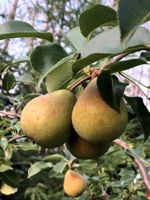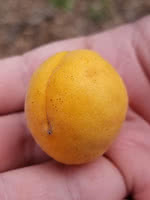Mon-Fri 9am - 5pm Mountain time
Manchurian Apricot vs Beedle Pear
Pyrus Beedle
Prunus armeniaca var. mandshurica
COMING SOON
(new stock expected: later this season)
Beedle Pear is sweet, soft, and juicy with no astringency making it great for fresh eating. They typically ripen on the tree in early September. The medium-sized pears keep relatively well when compared to other varieties. For most years it is a reliable producer on the prairies.
The Beedle Pear is a cold hardy pear with Canadian roots. John Beedle discovered it on a city boulevard in St. Albert, Alberta.
For fruit production, another pear variety is required for cross-pollination. Can be paired with Krazulya Pear or Ussurian Pear.
Manchurian Apricot is a winter-hardy relative of the native plum. This tree can stand some drought, but will not handle standing water or saturated moist soils. It can be used in shelterbelts, hedges, or as an ornamental. Manchurian Apricot will also attract songbirds, rabbits, and other rodents if left uncontrolled.
This tree will produce fruit once it reaches maturity at between two and five years old. Other famous cultivars of Manchurian Apricot include Scout Apricot, Moongold, and many more.

